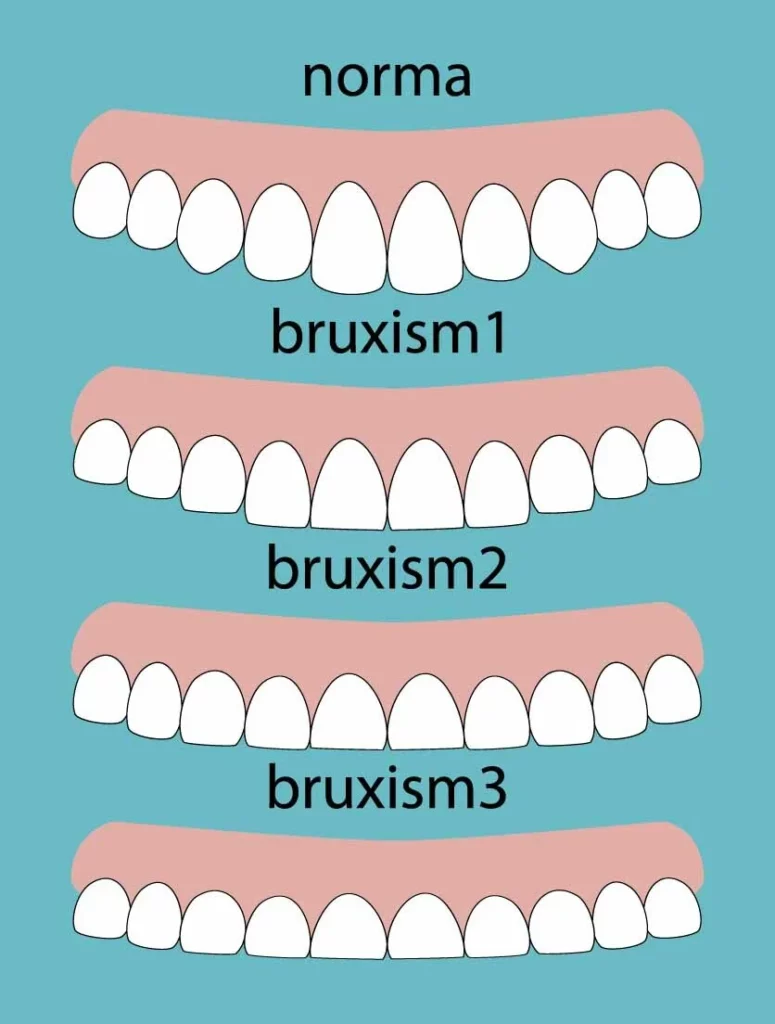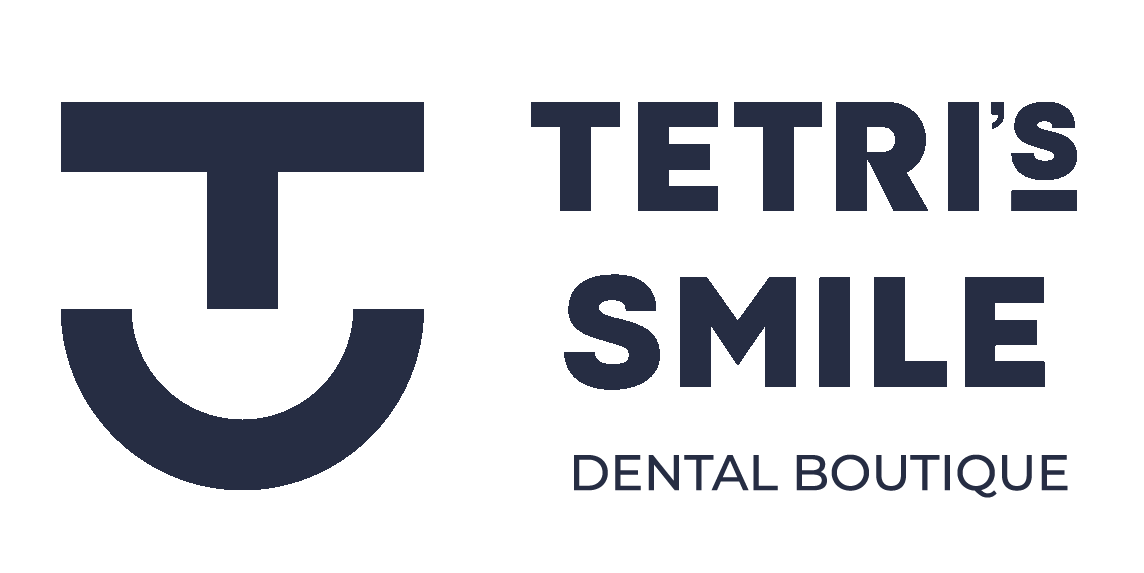BRUXISM
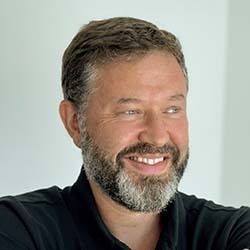
Has a family member ever told you that you regularly grind your teeth in your sleep? This is called bruxism, a rare disease that occurs in 1-3% of the world’s population. Lack of treatment leads to serious problems with dental health and causes problems throughout the whole body.
What is bruxism (teeth grinding)?
Bruxism is uncontrollable/episodic contractions of the masticatory muscles, accompanied by strong jaw clenching and teeth grinding. Various reasons can underlie the disease, including combinations of multiple factors. Diagnosis and treatment require a multidisciplinary approach.
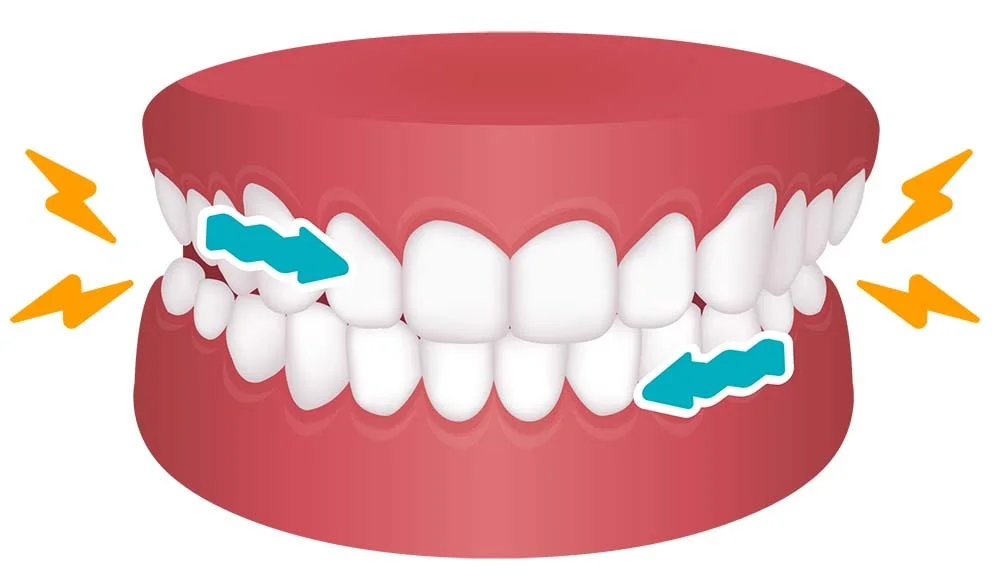
Symptoms
Let us remind you that bruxism is involuntary jaw clenching, often occurring in your sleep. That’s why it is impossible to notice it happening when you’re on your own. Commonly, relatives of patients hear teeth clicking or grinding during the night, and relate these observations to the patient.
If you notice any of these signs, be sure to see a doctor. The earlier the cause of teeth grinding is diagnosed, the fewer complications will need to be addressed during treatment!
Types of bruxism
A semi-arbitrary teeth clenching due to stress or anxiety.
Involuntary movements of the lower jaw. Some are accompanied by night snoring and apnea (respiratory failure).

According to the type of jaw movements, bruxism is divided into:
Grinding (lateral/transverse movement)
Clenching (anterior/posterior movement)
Clicking
Reasons
The emergence and development of bruxism are associated with a complex disorder of various body systems.
DENTAL
A number of clinical studies have confirmed that the development of bruxism is influenced by occlusal disharmony associated with:
When you have a bite disorder, your jaws can’t find a resting point. The facial muscles try to adapt (find a comfortable position) to the pathological jaw clenching, leading to their involuntary movements.
Interesting Fact!
It is scientifically proven that bruxism can be inherited.
The perception of any situation as stressful, constant anxiety, or nervous stress contribute to unconscious contraction of the facial muscles, leading to teeth grinding. Bruxism is thought to be a somatic platform for releasing stress outward. Uncontrollable spasms of the masticatory muscles are a manifestation, so to speak, of the body’s psychological release.
Uncontrolled teeth grinding can be caused by a disorder of the central or peripheral nervous system. Bruxism is often associated with snoring, sleep apnea, epilepsy, and other neurological pathologies. Effective treatment of these conditions helps to reduce the symptoms.
“Bruxism is a complex pathology with a wide list of causes and consequences. Nevertheless, I know how to help get rid of this pathology. My skills in orthopedics, periodontics, gneuromuscular dentistry, and implantology allow me to provide an in-depth diagnosis, finding the causes of disease development, and offer quality treatment. You will forget about teeth grinding and enjoy a beautiful, healthy smile.
I was trained by Dr. Clayton Chan — the founder of Occlusion Connections in Las Vegas and the world’s leading expert in occlusion and temporomandibular joints. Schedule an appointment with me – entrust your health in good hands!”

Risk factors
Predisposing factors to the bruxism development include:
Diagnosis
We perform multilevel diagnostics: physiological, gnathological, and neuromuscular.
We perform a computerized three-dimensional scan of the mandibular trajectories. It allows us to determine the place of central occlusion — the correct relationship between the teeth of the upper and lower jaws.
Electrosensors take real-time data from eight locations of facial muscle projections, both at rest and during work. The obtained data help to identify the smallest deviations (up to 20 microns) of the facial muscles position from the correct occlusion.
High-sensitivity microphones are placed in the temporomandibular joint area to record noise/vibration at mouth opening and closing with maximum amplitude. A computer program analyzes the results and identifies abnormalities in TMJ movements.
Treatment of nocturnal bruxism: How GNM can help
GNM = G (Gnathologics) + NM (Neuromuscular). Includes skillful clinical application of gnathology, orthopedics, and orthodontics.
Bruxism should be treated not just by a neurologist, orthodontist, or orthopedist, but by a doctor with knowledge of gnathology and gneuromuscular dentistry. It is impossible to restore the correct interaction of the lower jaw with the central and autonomic nervous systems without GNM skills.
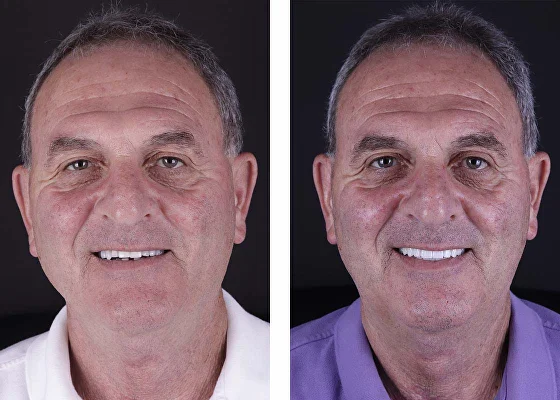
Patient 12
Description:
This patient’s crowns often cracked and had to be constantly replaced. He also suffered from frequent headaches and stiffness in the neck. After being diagnosed in accordance with GNM standards, Dr. Tetri identified bruxism as the cause of these problems.
Solution:
Dr. Tetri performed a full mouth reconstruction on both jaws. Zirconia crowns with ceramic laminate were placed. The correct symmetry of the face was restored. The smile became wider, more beautiful. The bite returned to its correct state; bruxism was eliminated.
How to alleviate bruxism before treatment
Complications
Constant abnormal overloading of the teeth and jaw muscles without treatment leads to serious problems such as:
- Increased tooth abrasion. The crown part of the tooth breaks down — first the enamel, then the dentin. The pulp may become exposed. There may be increased teeth sensitivity to irritants, accelerated development of tooth decay, and cracks / chips.
- Periodontitis. Periodontitis develops against constant trauma of periodontium. Teeth become loose and can fall out.
- TMJ dysfunction. TMJ dysfunction is accompanied by pain in the jaw and neck and hypertrophy of the masticatory muscles. It hurts the patient to chew and talk.
- Cervical arthrosis. The spine is often involved, and postural changes may occur.
- Hypertrophy of facial muscles. Constant overexertion of the masticatory muscles leads to their deformation. The face aesthetics change; it takes on an abnormal, asymmetric shape.
Come to Tetri’s Smile. We not only treat the effects of bruxism — we restore the correct bite, return the temporomandibular joint to the correct position, and “teach” the facial muscles to work normally again!
